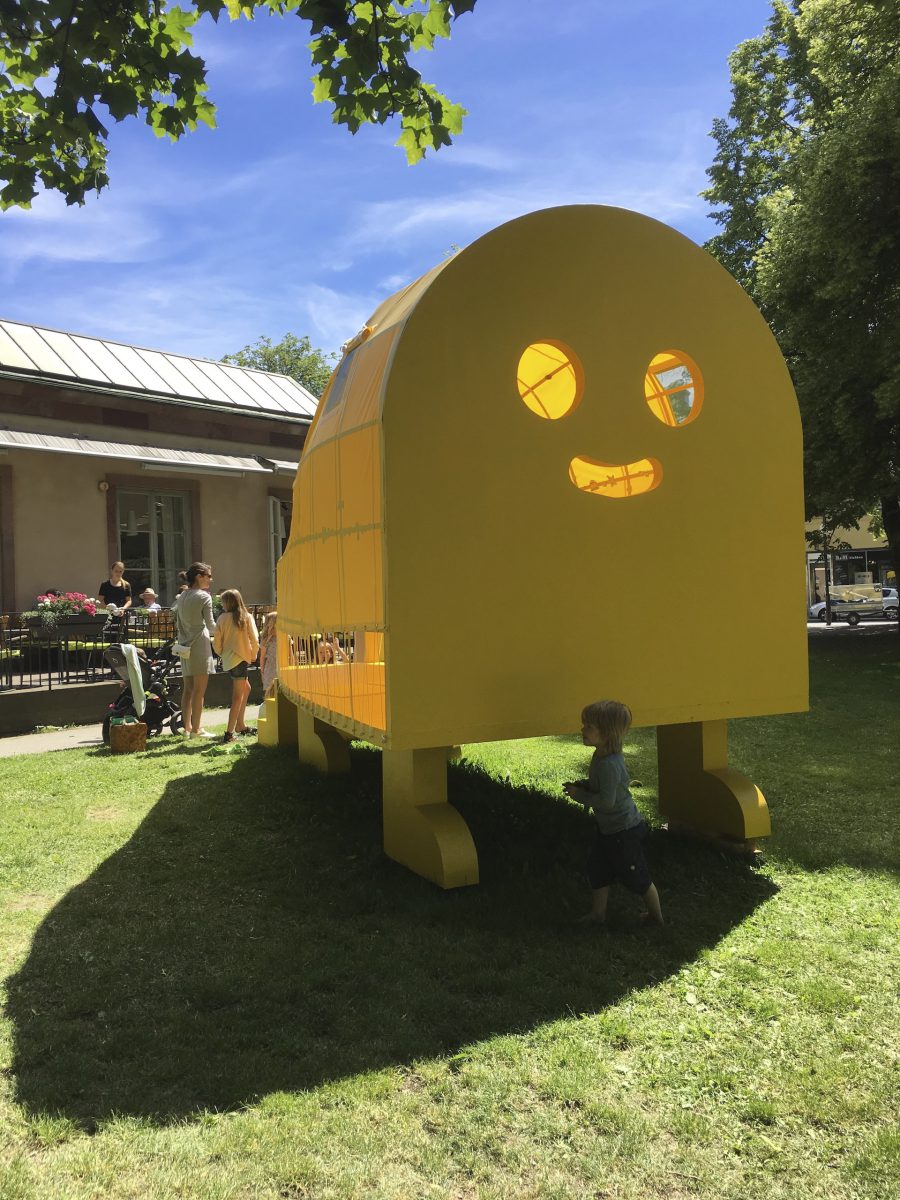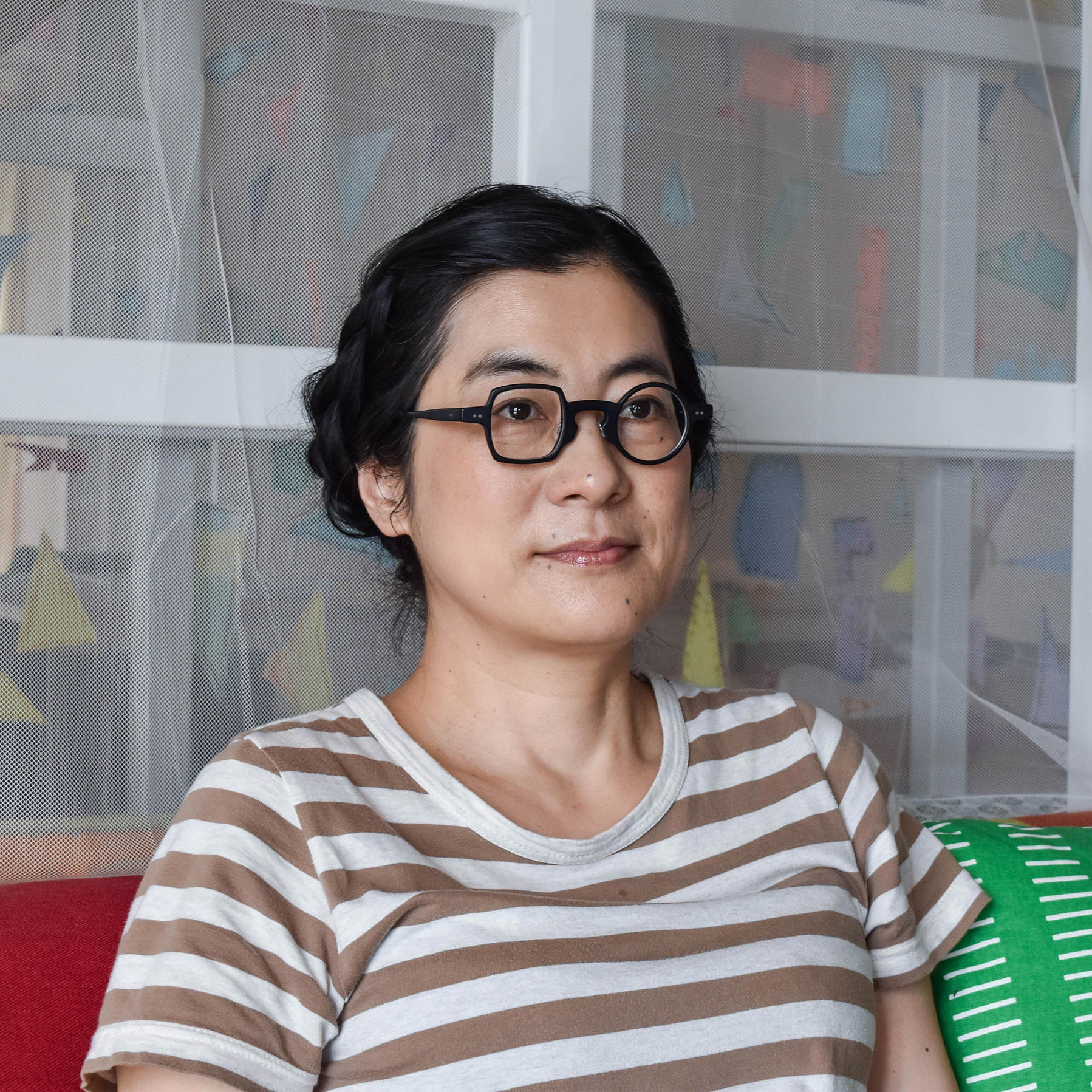 Ishibiki area
Ishibiki area
OHGI Kanae

mobile smile tea room, 2017, Installation view at OpenART 2017 (Sweden), © Ohgi Kanae
Artist Statement
I still recall a memory from some 30 years ago, of a scene in an Asian city.
I was in the city at the time to work on a large mural. I was walking hurriedly through the crowded street to catch a train that would take me to the station closest to my work site.
The crowds making their way to workplaces seemed the same as anywhere else: there was a buzz of people coming and going hurriedly. But at the edge of the bustling street, there was a “home.”
A girl of seemingly no more than six years of age was living there, together with her brothers. Their home had no roof, no supports, no walls: it was just an empty space. The girl, who seemed to be the head of the household, was preparing breakfast with a maternal look in her eyes. She was spreading butter with her slender finger on small slices of bread, which would be her brothers’ morning meal. The brothers waited solemnly while the meal was prepared. Rather than imparting a sense of the loneliness and insecurity of these children having to live on their own at the roadside, this scene for some reason seemed perfectly fit to be described as “home” or “household.”
Their home was there – on the margin of the busy city.
Most of us possess a solid space that we can call our home, which consists of land we have purchased and a building we have constructed on it. But what I saw suddenly made me think that this might be just an illusion.
More than anything, it is when a space is filled up with feelings and time that it becomes “home.”
And this kind of home is always movable.
Surrender yourself to the flow of time, take plenty of time to select a place, and feel the atmosphere of the place. Enjoy chatting with people you meet there over a cup of tea and cakes, with a smile.
This is how my feelings and those of someone I have yet to know will create another new “home.”
OHGI Kanae

Born in Karatsu, Saga in 1963, she lives in Kurume, Fukuoka, Japan. After graduating as an oil-painting major in 1984 from Musashino Art University Junior College of Art and Design, she produced large installations, mainly in Tokyo. She has created site-specific works using existing building walls in India, Singapore, and others. Since changing her base from Tokyo to Fukuoka, she has created many public artworks inside and outside of buildings and conducted workshops using food. A descendent of Meiji era to early Showa era tea practitioners including the teahouse architect OHGI Rodou and wood craftsperson OHGI Seisai, she aims to evoke the state of clear mind and relaxation characteristic of tea ceremony in works such as the Yellow Smile tearoom at OpenART Biennale 2017 (Örebro) and through holding tea ceremonies with citizens. Other projects in development include “thinking by hand” children’s art activities and the unit “YAPPOTUKA” with sculptor USHIJIMA Hitoshi.
